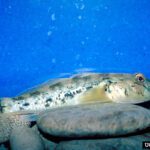Description:
The Sturgeon River is famous for its speed, it has a slope of nearly 15’ per mile, and undeveloped forested banks, with overhanging trees and quick turns as obstacles for even experienced paddlers. It is also famous for its coldwater fishing, being a state-designated Blue Ribbon Trout Stream.
The Sturgeon River has two branches. The East Branch has headwaters in hills that include part of the City of Gaylord in central Otsego County, while the West Branch originates in Huffman Lake and Thumb Lake in Eastern Charlevoix County. Both branches flow north through largely undeveloped forests and converge at the town of Wolverine in southern Cheboygan County. From here, the Sturgeon River continues to flow north through some of the most spectacularly scenic country in Michigan’s Lower Peninsula. Throughout its lengths, many sections of the river pass through the Mackinaw State Forest.
Energized by its speedy journey through large expanses of wilderness, the Sturgeon River pours into Burt Lake on the south side of Indian River. As the water slows down, it dumps its sand to form a delta. In this lower stretch of the river, there is residential and commercial development along its banks.
Other Threats to Water Quality
Monitoring
The Sturgeon River is monitored every three years through the Watershed Council’s Comprehensive Water Quality Monitoring (CWQM) Program for dissolved oxygen, specific conductivity, pH, nitrate-nitrogen, total nitrogen, total phosphorus, chloride levels, and total suspended solids.
Biological monitoring is also performed by volunteers in the Bear River each spring and fall as part of the Watershed Council’s Volunteer Stream Monitoring (VSM) Program.
Additional Resources:
Information about Threatened, Endangered, and Special Concern species in this stream’s watershed is available on the Michigan Natural Features Inventory (MNFI) website.
Discharge data for this stream is available online through the Michigan Department of Environmental Quality’s Low Flow Discharge Data Base.
USGS Current Water Data for Michigan provides stream flow conditions.
A wide variety of maps, including Vegetation circa 1800, National Wetlands Inventory, Land Cover Change 1800’s to 1978, Wetland Change 1800’s to 1980, and many other resources for this area are available online in the Michigan Natural Features Inventory (MNFI) Data Resources page.
Learn about safely eating fish from this river in the Michigan Fish Consumption Advisory.
| Title | Link |
|---|


